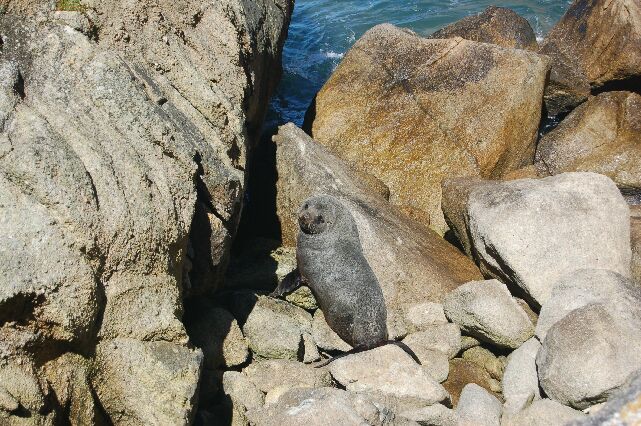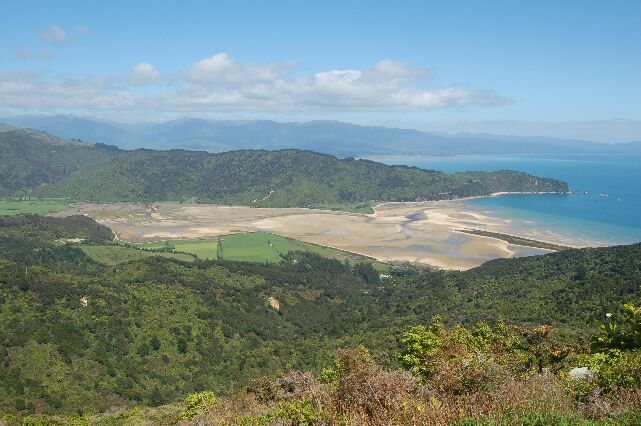
Day 1: The day starts off with sunshine, and the trek is relatively easy going with a rather large downhill to the beach around midday. We eat lunch, and settle in to wait for low tide which will shave an hour off the hike to the campsite. After resting we discover the wind is blowing mightily, and the clouds in the distance make us hike to our campsite the long way. It starts drizzling on the way and we pitch tent to wait out the storm, in what would have been a beautiful bay.

Day 2: It poured all night and it hasn’t stopped. The inside of our tent is dry until we unpitch it. We hightail it for a shelter a few hours away to eat a hot breakfast. Much of the track in this three hours resembles a river more than a trail, but our rain gear keeps us mostly dry and warm, if grumpy. Happily, the hut that we reach has a heater. We sit around for a few hours chatting with other shelter-seekers, ostensibly waiting for the tide to lower so we can cross a river, but mostly waiting for the rain to stop. The sun peeks out around 2:30 and we decide to make a break for our campsite. The sun keeps shining on long stretches of untouched beaches. Eventually we take off our rain gear. This four hour hike is our favorite – perhaps because we’re reeling from the morning downpours, perhaps because we stop for a beer at an exclusive lodge in the middle of the park. Barely beating sunset we set up camp for the night over the Arawoa Estuary as the rain starts to pour again.

Day 3: We wake up to a much nicer morning than the day before, and prepare to cross the estuary while it is low tide. Crossing rivers that are 50 degrees cold isn’t much fun, but it’s better when they’re only at your calves instead of your thighs. Who needs coffee? We reach our next campsite, Mutton Cove, early in the day leaving time for a hike to a seal colony as well as hours swatting sandflies on the beach, all without our packs.

Day 4: Another beautiful day inspires us to take the long way to our water taxi, around, up, and over the largest hill in the park, 400m of steep ascent. We almost regret this decision until we see the views of most of the park from the top. From there on out, it’s easy, we descend, wait for our water taxi, and sit back and relax for the two hour ride back to our car at the beginning of the track.
60 kilometers later with sore feet and legs, we begin to recuperate and still are. If we were cheesy, we’d say it was well worth it to lug all our necessities those 60 Kms and sleep in our tent in the rain in order to experience the “real outdoors.” Of course, in reality, there were flush toilets and running water at the campsites. Of course, no one would believe that we hiked all that otherwise. 😉
Leave a Reply